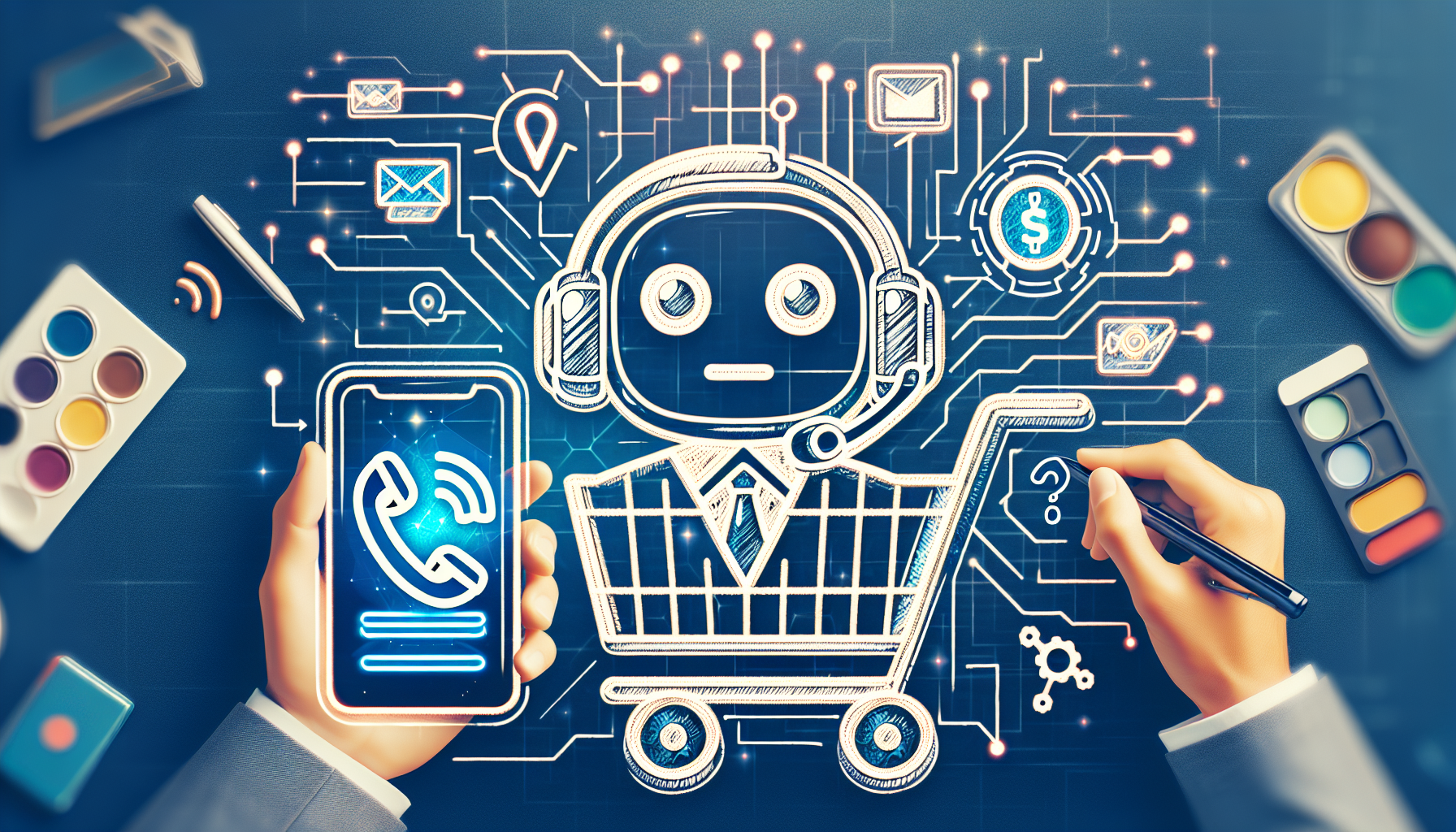The Role of Chatbots in ECommerce: Transforming Customer Support
Understanding Chatbots in ECommerce
Chatbots are automated software applications designed to engage in conversation with users, simulating human-like interactions. In the realm of eCommerce, these digital assistants are rapidly transforming customer support operations. The application of chatbots in eCommerce is not merely a trend; it’s an evolution influenced by growing consumer expectations and technological advancements.
Enhancing Customer Experience
One of the primary roles of chatbots in eCommerce is to enhance the customer experience. Today’s consumers expect instant responses to their inquiries. Chatbots can provide 24/7 support, answering questions about products, order status, and returns without human intervention. This immediate response capability significantly reduces wait times—often a major pain point for customers.
For instance, a customer browsing an online store may have specific questions about sizing or availability. Chatbots can quickly provide relevant information, ensuring customers can make informed purchasing decisions without bouncing between web pages or waiting for an email response.
Personalization and Engagement
Chatbots facilitate personalized shopping experiences by leveraging user data and behavioral patterns. By analyzing past purchases and browsing history, these tools can recommend products that align with the customer’s preferences. For example, if a user frequently purchases fitness gear, a chatbot can prompt them with new arrivals in that category, thereby increasing the likelihood of conversion.
Moreover, chatbots can initiate proactive engagement. For instance, if a user spends a significant amount of time on a product page without making a purchase, a chatbot can reach out with an offer or ask if they need assistance. This can play a crucial role in reducing cart abandonment rates.
Cost Efficiency and Scalability
Implementing chatbots in eCommerce can lead to significant cost savings. Traditional customer support typically requires a large team to handle inquiries, whereas chatbots can manage thousands of conversations simultaneously. This scalability means businesses can allocate resources more efficiently, focusing on complex queries that require human intervention while automating mundane tasks.
For small and medium-sized enterprises, the cost of deploying a chatbot can be a game-changer. With a lower barrier to entry, these businesses can provide high-quality customer support that rivals larger competitors without the corresponding investment.
Streamlining Operations
Chatbots also enhance internal operational efficiency by automating frequently asked questions (FAQs) and routine support tasks. For example, common inquiries regarding shipping policies, return procedures, and product specifications can be handled by chatbots, allowing human agents to focus on more complex customer issues.
This operational streamlining leads to increased overall productivity within support teams. With AI-driven insights, businesses can pinpoint knowledge gaps and update their knowledge bases in real time, further enhancing the reasons to engage customers through chatbots.
Integrating with Other Technologies
Modern chatbots are not stand-alone solutions; they often integrate with various systems within an eCommerce infrastructure. For example, by connecting with Customer Relationship Management (CRM) systems, chatbots can retrieve personalized customer data, making conversations even more tailored. This information can be crucial for improving customer satisfaction.
Furthermore, integration with payment gateways enables chatbots to facilitate transactions directly within a chat interface, simplifying the buying process. This seamless interaction enhances user convenience and encourages impulse purchases.
Addressing Multiple Channels
ECommerce platforms utilize various channels to reach customers, including websites, social media, and messaging apps. Chatbots provide a unified approach to customer support across these platforms. With omnichannel capabilities, they can ensure that customers receive consistent support regardless of the platform they use to engage.
For example, a customer seeking help on social media can receive guidance from a chatbot just as they would on the company’s website. This consistency builds trust and promotes brand loyalty, as customers appreciate a seamless experience across different touchpoints.
Gathering Valuable Insights
Chatbots serve as an invaluable tool for collecting data on customer interactions. The information gathered from conversations can provide businesses with insights into consumer preferences, pain points, and trends. For instance, if numerous customers inquire about a specific product issue, this feedback can highlight areas needing improvement.
By analyzing this data, companies can make informed decisions about inventory management, marketing strategies, and product development. The actionable insights gained through chatbot interactions often lead to improved service levels and an enhanced understanding of market demands.
Overcoming Common Challenges
Despite the significant advantages chatbots offer, their implementation can come with challenges. Ensuring the chatbot understands natural language and can respond appropriately is crucial for maintaining customer satisfaction. Poorly designed bots can lead to frustration, driving customers away rather than engaging them.
To counteract this, businesses must invest in high-quality natural language processing (NLP) technologies and regularly train their chatbots. Continuous monitoring and updates are essential for adapting to changing customer needs and improving response accuracy.
Future Trends in Chatbots
As technology evolves, so too does the potential of chatbots in eCommerce. With the rise of AI and machine learning, future chatbots will likely become even smarter, capable of understanding emotional cues and offering empathetic responses.
Moreover, advancements in voice recognition could lead to an increase in voice-activated chatbots, allowing customers to interact hands-free while shopping. Features like augmented reality (AR) could also be integrated, enabling customers to visualize products in their own environment through chatbot interactions.
Final Thoughts
The adoption of chatbots in eCommerce is reshaping the customer support landscape, driving increased efficiency, augmented personalization, and enhanced user experiences. As technology continues to advance, the role of chatbots will likely expand, offering even more sophisticated solutions to meet evolving consumer demands and expectations. By prioritizing the integration of chatbots into their operations, eCommerce businesses can maintain a competitive edge in the ever-evolving digital marketplace.


